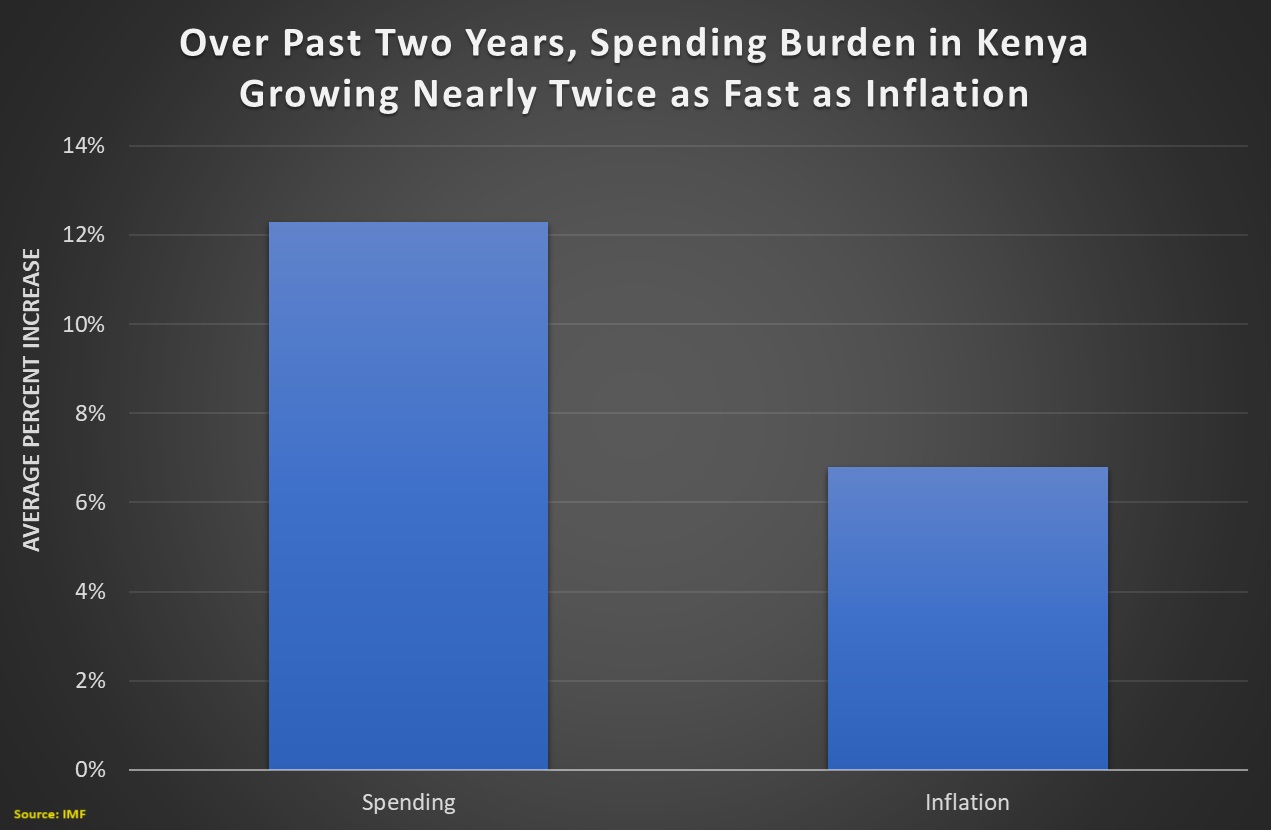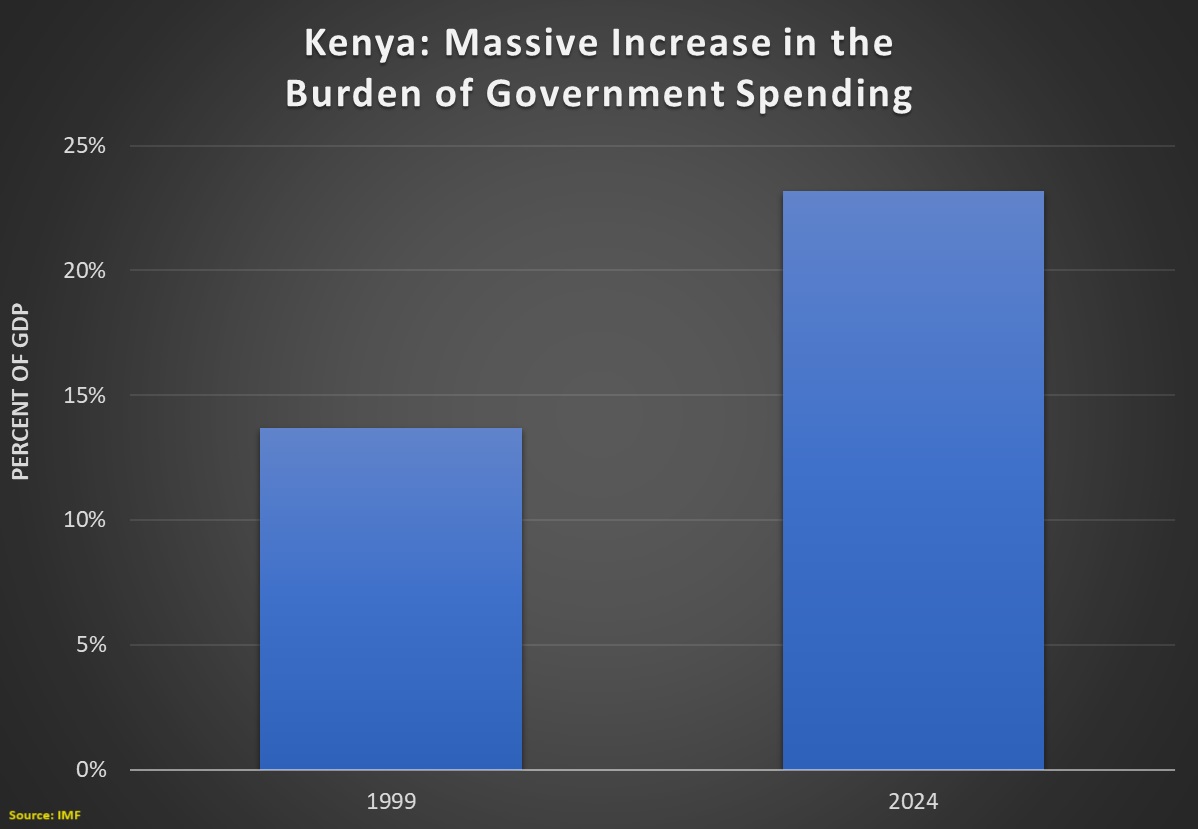I wrote earlier this year about Kenya’s fiscal policy and I made two points.
- Kenya is in trouble because the burden of government spending has exploded over the past twenty-plus years.
- Tax increases in Kenya are backfiring because people are changing their behavior in response to government greed.
Unfortunately, that hasn’t stopped the Kenyan government from pushing for further tax increases. Following the horrible advice of the International Monetary Fund, the Kenyan government has been raising just about every tax imaginable.
And they’ve reached the breaking point. But I’m not referring to the Laffer Curve (though that’s an issue).
The suffering taxpayers of Kenya are revolting against their greedy government. In response, the government is killing them. Here are some of the tragic details from a report in the Washington Post by Rael Ombuor.
At least five people were killed during street protests over a new tax proposal Tuesday in Kenya’s capital as police fired on protesters… The protests targeted Kenya’s president, William Ruto, who, despite being lauded in Washington during a recent state dinner hosted by President Biden, has become deeply unpopular at home over tax hikes that have enraged the middle class. His ruling party pushed through a new tax bill Tuesday as the protests mounted. …The legislation, dubbed Finance Bill 2024, was introduced in Kenya’s Parliament for debate in May. It calls for increases in taxable incomes, excise duties and value-added taxes, and introduces new income tax categories to the country’s finance laws. …Among the clauses in the tax legislation are a proposal to increase tax income earned from digital platforms, a tax on food products such as bread and oil, and taxes on contributions to social security funds. The bill also initially proposed to introduce a motor vehicle tax at the rate of 2.5 percent of the value of the vehicle owned, and an environment tax on imported manufactured goods such as menstrual pads, diapers and phones.
A good report, but it’s missing two things.
First, there’s no mention of the pernicious role of the IMF. Which is a bit of an oversight since all it would take is a look at the Kenya section of the IMF’s website to see how the bureaucracy has been hassling the government to raise taxes.
Second, there’s no fiscal analysis in the article. So I’ll make up for that sin of omission. I went to the IMF’s big database to look at Kenya’s fiscal and economic data.
Lo and behold, I found that government spending has grown nearly twice as fast as inflation over the past two years.

In other words, Kenya has an over-spending problem, not an under-taxing problem.
How big is the over-spending problem?
Here’s another chart showing how the burden of government spending has skyrocketed over the past 25 years.

Measured as a share of the economy, the spending burden has jumped by more than 50 percent, from less than 14 percent of GDP to more than 22 percent of GDP.
By the way, the tax burden has climbed by about 5 percentage points of GDP, confirming once again that Kenya has a spending problem rather than a revenue problem.
Just like my country. Except we have riots about election results, not taxes, so Kenya has an advantage.


